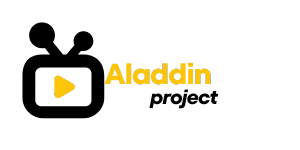Iran’s leaders are dealing with a difficult scenario following the dying of President Ebrahim Raisi, as voter turnout has been steadily declining lately. Supreme Chief Ayatollah Ali Khamenei now faces a call on how you can proceed with the upcoming presidential elections. He has two choices – open the elections to all, risking a aggressive final result that will not align together with his objectives, or proceed blocking reformist and average candidates, doubtlessly resulting in even decrease voter turnout and backlash towards his authoritarian regime.
Iran’s political system is a theocracy with Ayatollah Khamenei on the helm, making key selections on nuclear, army, and international insurance policies. The president performs a extra restricted function in home and financial affairs however nonetheless holds affect. Elections function a barometer of public sentiment, with low turnout seen as a mirrored image of rising discontent with the conservative institution led by Khamenei. The dying of Raisi, a loyalist of the supreme chief, has created a vacuum that might result in infighting amongst conservatives vying for energy.
Potential candidates within the upcoming elections embody Mohammad Baqer Ghalibaf, a technocrat, and Saeed Jalili, a former Revolutionary Guards fighter identified for his hard-line stance. Khamenei’s historical past of excluding reformist or average candidates has resulted in decrease voter turnout, as seen in Raisi’s election in 2021 with the lowest-ever participation charge. The shortage of a transparent successor to Raisi and Khamenei’s superior age and well being situations add additional uncertainty to Iran’s political future.
Whereas Khamenei could also be reluctant to widen the candidate pool resulting from issues over a steady management transition, the nation’s financial challenges and public disillusionment may push him to think about moderates. Previous surprises in Iran’s political panorama, corresponding to Ahmadinejad’s populist presidency and Rouhani’s nuclear deal efforts, show the system’s capability to shift unexpectedly. Nonetheless, the present lack of a distinguished average candidate and widespread disillusionment among the many voters increase questions on voter turnout and the regime’s potential for change by the poll field.
The chance of rising disillusionment with the political system in Iran poses a long-term risk to the regime’s stability, as anti-government protests and repressive measures have already marked a troubling development. The choice Khamenei makes forward of the upcoming elections could have vital implications for Iran’s political panorama, with the potential for continued authoritarian rule or a shift in the direction of openness and reform. The steadiness between hardline conservative forces and requires change from inside and out of doors the system will form the trail forward for the Islamic Republic.


